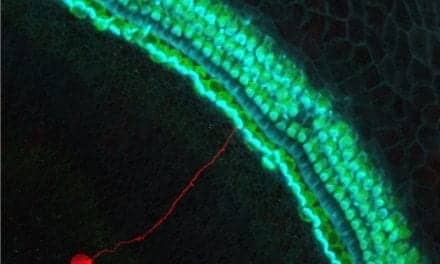The fly Ormia ochracea has evolved directionally sensitive ears to eavesdrop on the communication signals of field crickets. Crickets that are parasitized by these flies face almost certain death. How these flies recognize cricket songs and whether crickets can change their love songs to avoid parasitism is unknown.
A new study by St Olaf College Assistant Professor of Biology Norman Lee, in collaboration with students Alexander Kirtley ’19, Isaiah Pressman ’19, and Karina (Kari) Jirik ’20 and University of Toronto collaborators Dean Koucoulas and Andrew Mason, shows a novel approach that can be used to study song recognition in O ochracea, according to an article on the St Olaf website.
Their work is published as part of a special research topic called “How Enemies Shape Communication Systems: Sensory Strategies of Prey to Avoid Eavesdropping Predators and Parasites” featured in Frontiers in Ecology and Evolution.
This approach relies on using a newly developed performance index and a treadmill system to measure how well flies respond to different cricket songs.
“This is an exciting advance because the approach can be broadly applied to better understand the sensory basis of song recognition, signal discrimination, learning and memory, and other auditory perceptual phenomenon in eavesdropping enemies,” says Lee. “This, in turn, will allow us to evaluate the effectiveness of behavioral strategies and the design of communication signals that prey or hosts may take to mitigate the risk of death.”
Temporal pattern recognition is a common sensory processing task shared by many animals that communicate with acoustic signals, including human speech. Studying temporal pattern recognition in O ochracea may provide insights into general auditory system function involved in signal recognition.
Lee believes that his research into O ochracea hearing can be harnessed to help improve human hearing by providing engineers with insights into how the natural world has solved common hearing challenges such as recognizing temporally patterned sounds. Engineers have relied on biomimicry to design miniature microphones based on O ochracea ears, with the hope of applying these microphones to create directional hearing aids.
“Understanding the signal features that auditory systems have evolved to assess salient sounds may help engineers improve signal processing strategies implemented in hearing aid technology,” Lee says.
Original Paper: Lee N, Kirtley AT, Pressman IS, Jirik KJ, Koucoulas D, Mason AC. Developing a phonotaxis performance index to uncover signal selectivity in walking phonotaxis. Frontiers in Ecology and Evolution. 2019;(7). https://doi.org/10.3389/fevo.2019.00334.
Source: St Olaf College, Frontiers in Ecology and Evolution
Images: St Olaf College







